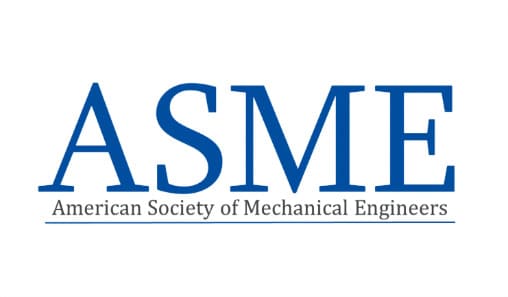How CFD Simulation Can Improve and Maximize Heat Exchanger Design and Performance
- Alvaro Filho
- Apr 30
- 4 min read

Heat exchangers are essential equipment in several industrial processes. Whether in power generation, the chemical or petrochemical industry or in HVAC systems, they are very important to ensure thermal control, energy efficiency and adequate heat transfer in process lines. The performance of this equipment has a direct impact on energy consumption, operating costs and even the environmental footprint of an industrial process.

Despite its importance, designing efficient and compact heat exchangers remains a challenge. This is because the phenomena involved — such as heat transfer, temperature gradients, turbulent flow patterns, and the formation of dead zones or recirculations — are highly complex and interdependent. Small geometric changes can have significant effects on the thermal and hydrodynamic performance of the system.

Traditionally, many of these designs are based on empirical correlations or semi-analytical methods, which, although useful, are not always able to capture all the complexity involved in the internal flow of modern exchangers, especially those that are highly compact or have innovative geometries.
This is exactly where CFD (Computational Fluid Dynamics) simulation has come into its own, making it possible to create three-dimensional models that reveal in detail the behavior of the fluid, heat exchanges and pressure gradients — all based on real operating conditions.
Challenges and Solutions
Designing an efficient heat exchanger is not just about ensuring that heat exchange occurs — the real challenge is balancing thermal performance, pressure drop and manufacturing feasibility. A design that transfers heat well but requires more powerful pumps due to the high pressure drop in the flow may make the system unviable in terms of operating costs. Similarly, highly efficient solutions from a thermal point of view may be difficult or expensive to produce.
Another recurring problem is the incorrect sizing of baffles, fins and channels, which can generate recirculation or dead zones in the flow, compromising the uniformity of heat exchange and creating hotspots. These details, often invisible in traditional analyses, directly affect the durability and performance of the equipment.

This is where CFD simulation with STAR-CCM+ comes in handy. It allows you to visualize the flow in 3D, observe temperature and pressure profiles, and predict exactly where losses or inefficiencies occur. The engineer can test different geometries, modify inlet angles, spacings, and even combine baffles and fins to maximize turbulence where it is desired — all before any physical prototype is manufactured.
In addition, simulation results can be used to validate designs in accordance with technical standards, such as ASME, TEMA or API 660 specifications, ensuring that the equipment meets the safety, reliability and performance criteria required by the industry. This not only speeds up the development process, but also reduces rework costs, increases the lifespan of the exchanger and improves the project's return on investment (ROI).
Simulation
The simulation study, using STAR-CCM+, in question focuses on the detailed analysis of a shell-and-tube heat exchanger, with the aim of investigating the key variables of heat exchange and operational stability of the equipment.

The modeling adopted the conjugate heat transfer (CHT) regime, allowing simultaneous simulation of fluid flow and thermal conduction in the walls of the tubes and shell. Each domain was treated with different physical properties, representing more faithfully the materials and fluids involved. The computational mesh was refined in the critical regions, especially near the tubes, where there is a greater thermal gradient and influence on heat transfer.
Figure 1. Geometry and computational mesh
Figure 2 shows the temperature profile in a vertical section of the domain. The fluid in the tubes enters at 353 K, while the fluid in the shell starts at 298 K. At the end of the path, the tube outlet temperature showed a reduction of approximately 7 K. This drop is more pronounced in the central region of the exchanger (Figure 3), indicating greater thermal interaction between the flows, favored by the geometry and arrangement of the tubes and internal baffles, which promote turbulence and better mixing.

Figure 2. Temperature profile

Figure 3. X-axis temperature graph
The velocity profile, shown in Figure 4, shows higher velocities in the inlet zones, especially in the upper tube; this acceleration is related to pressure gradients. The formation of recirculation zones and eddies can also be observed just after the inlet, especially near the deflector plates, which promote changes in direction and intensify turbulence. Near the outlet, the fluid accelerates again, reinforcing the hydraulic design in improving thermal efficiency and preventing dead zones with low heat exchange.

Figure 4. Velocity profile
Figure 5 shows the velocity iso-surface, where it is possible to observe fluctuations caused by the presence of baffles in the hull. These structures play a fundamental role in homogenizing the flow, directing the fluid transversely to the tubes and increasing the efficiency of heat exchange by increasing local turbulence.

Figure 5. Velocity iso - surface
Increasing complexity
Advancing the level of complexity of the model to more accurately represent the thermal and fluid dynamic behavior of the heat exchanger. Highlights include:
Use of advanced geometries (finned tubes, helical tubes, etc.)
Multiphase modeling in applications with condensation or evaporation
Variable thermo-physical properties depending on temperature
Parametric analysis and coupling with numerical optimization
Conclusion
CFD simulation applied to shell-and-tube heat exchangers captures the understanding of the thermal and fluid dynamic phenomena that directly impact the performance of the equipment. Identifying critical recirculation zones, speed variations and regions of intense heat exchange. Being able to predict in detail and accurately the physical phenomena involved in the operation of the equipment allows optimizing performance before manufacturing, ensuring greater efficiency and reliability and lower operating costs, leveraging innovation and development for increasingly better equipment.
Do you want to design more efficient, reliable and cost-effective heat exchangers? Schedule a meeting with CAEXPERTS and find out how CFD simulation with STAR-CCM+ can transform your challenges into accurate, cost-effective and high-performance solutions.
WhatsApp: +55 (48) 98814-4798
E-mail: contato@caexperts.com.br







